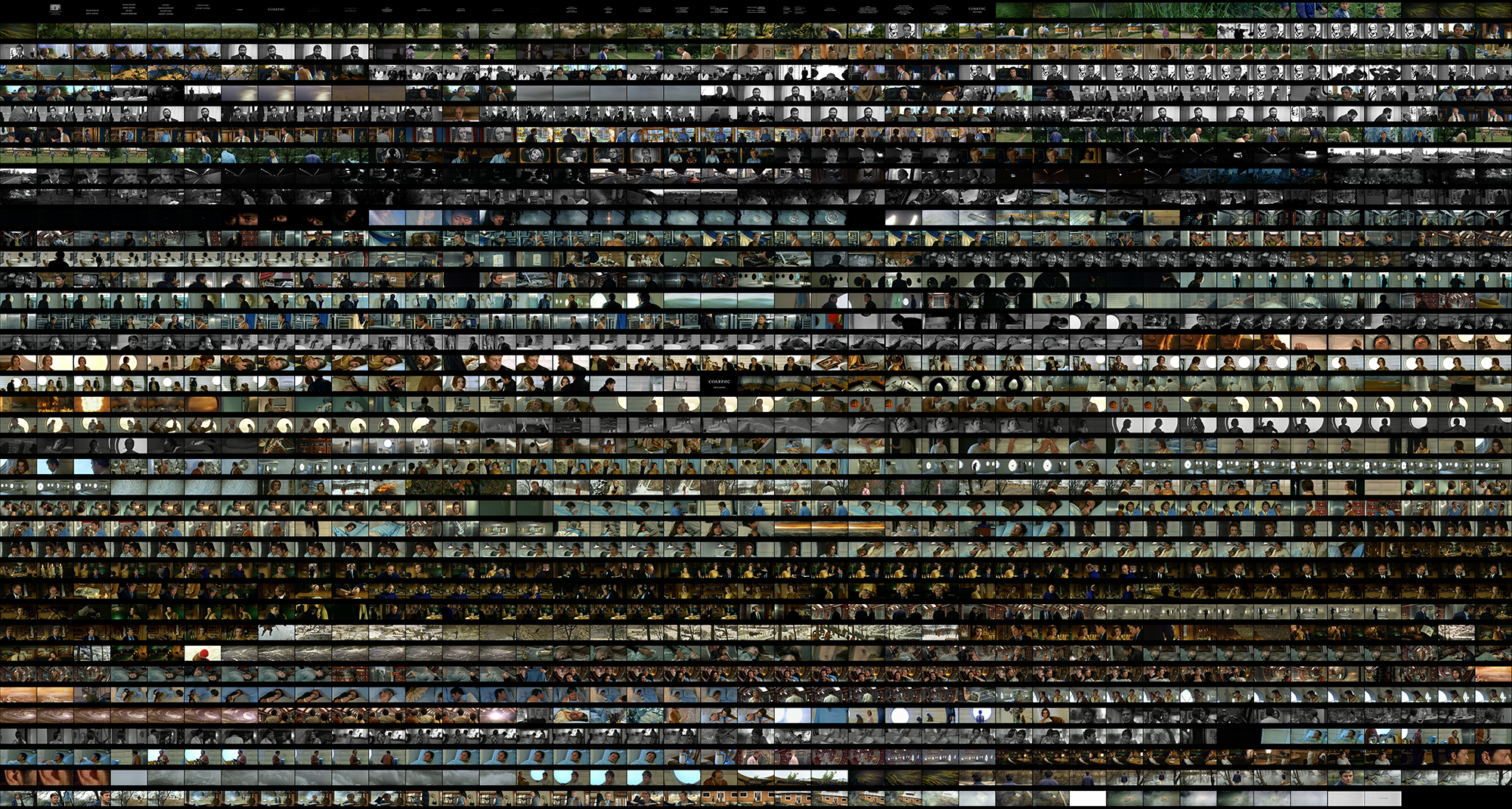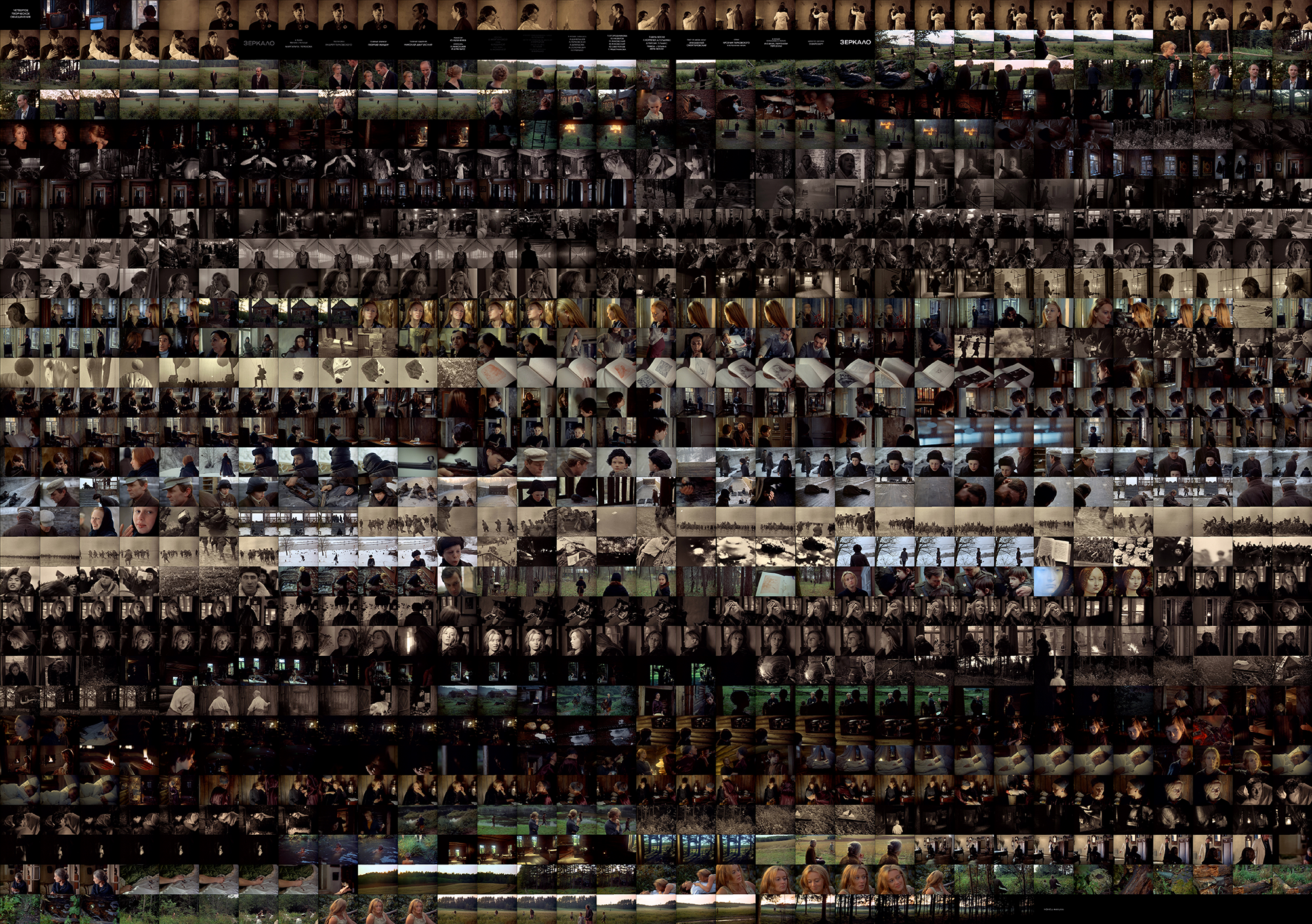Comparison between two films by Russian director Andrej Tarkovsky: Solaris (1972) Mirror (1975)
Many cultural artifacts exists as, or produce sequences of images, for example, films and video also know as Time based media. Inspiring by Software Studies Initiative lead by Lev Manovich and according to Manovich, "culture has become data" thus, the proper study of culture demands the use of software to: analyze cultural artefacts; visually represent patterns, data sets, and flow. Manovich, however, does not promote cultural analytics as the only method for understanding the humanities–both in the present and in their historical development–but sees it as a methodology that can partner with, or supplement, other available tools and methods. In short, the idea is that it is only by combining more traditional methods with data analysis that it will be possible to understand the historical developments of the humanities as well as make rational predictions on future developments. My project is the result as a academy professor of teaching cinematographic works, more generally media studies by applying alternative methods starting from the Software Studies Initiative.
Introduction: Andrei Tarkovsky is a celebrated Russian filmmaker known for his visually stunning films, philosophical themes, and poetic style. Two of his most famous films, Solaris (1972) and Mirror (1975), are the focus of this project. In this project, we will use ImagePlot to compare the hue, saturation, and brightness of key frames from these two films, in order to analyze and compare their visual styles.
ImagePlot: ImagePlot is a software tool that allows us to analyze and visualize large sets of images. It is widely used by researchers and scholars to study visual culture and media. ImagePlot provides a variety of tools for analyzing images, including histogram and scatterplot analysis, image clustering, and network analysis. To use ImagePlot, we first need to create a dataset of images that we want to analyze. For this project, we will use still frames from Solaris and Mirror. We will select frames from each film that represent key visual moments and analyze them using ImagePlot.
Comparison of Hue, Saturation, and Brightness: By comparing the hue, saturation, and brightness of key frames from Solaris and Mirror using ImagePlot, we can identify similarities and differences between the two films. We can also gain insight into the ways in which each film uses color and light to convey its themes and ideas. One of the key differences between Solaris and Mirror is their use of color. Solaris is predominantly black and white, with occasional splashes of color. Mirror, on the other hand, is full of vibrant colors and uses them to create a dreamlike atmosphere. This difference is reflected in the ImagePlot analysis of hue and saturation, which shows a clear separation between the grayscale frames of Solaris and the colorful frames of Mirror. Another difference between the two films is their use of brightness. Solaris often uses high-contrast lighting and deep shadows to create a sense of isolation and disorientation. Mirror, on the other hand, often uses soft and diffused lighting to create a dreamlike and poetic atmosphere. This difference is reflected in the ImagePlot analysis of brightness, which shows a clear separation between the high-contrast frames of Solaris and the softly lit frames of Mirror.
Conclusion: In conclusion, this project has used ImagePlot to compare the hue, saturation, and brightness of key frames from Solaris and Mirror, two films by the Russian director Andrei Tarkovsky. We have identified key similarities and differences between the two films and gained insight into the ways in which each film uses color and light to convey its themes and ideas. By using ImagePlot to analyze visual culture and media, we can deepen our understanding of the ways in which images shape our perceptions of the world.
below displaying saturation data visualizations in the form of animation
timeline frames montage from Solaris

timeline frames montage from Mirror
